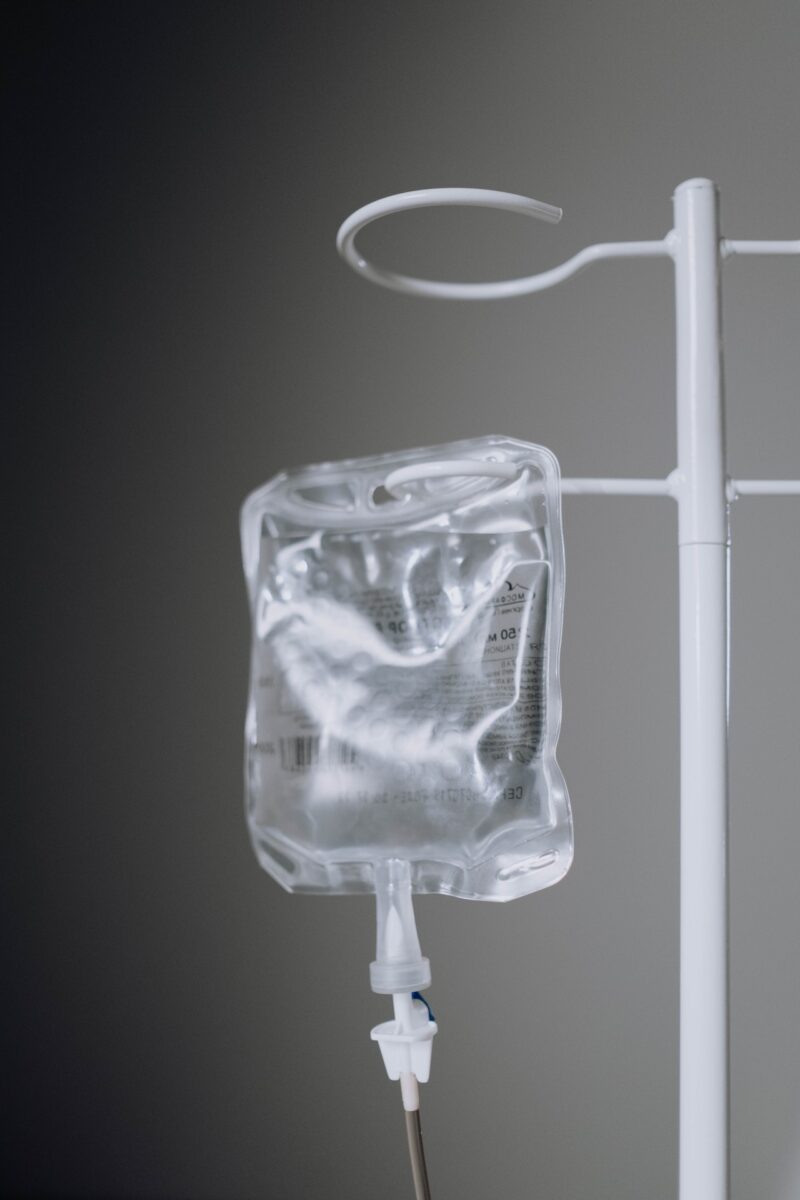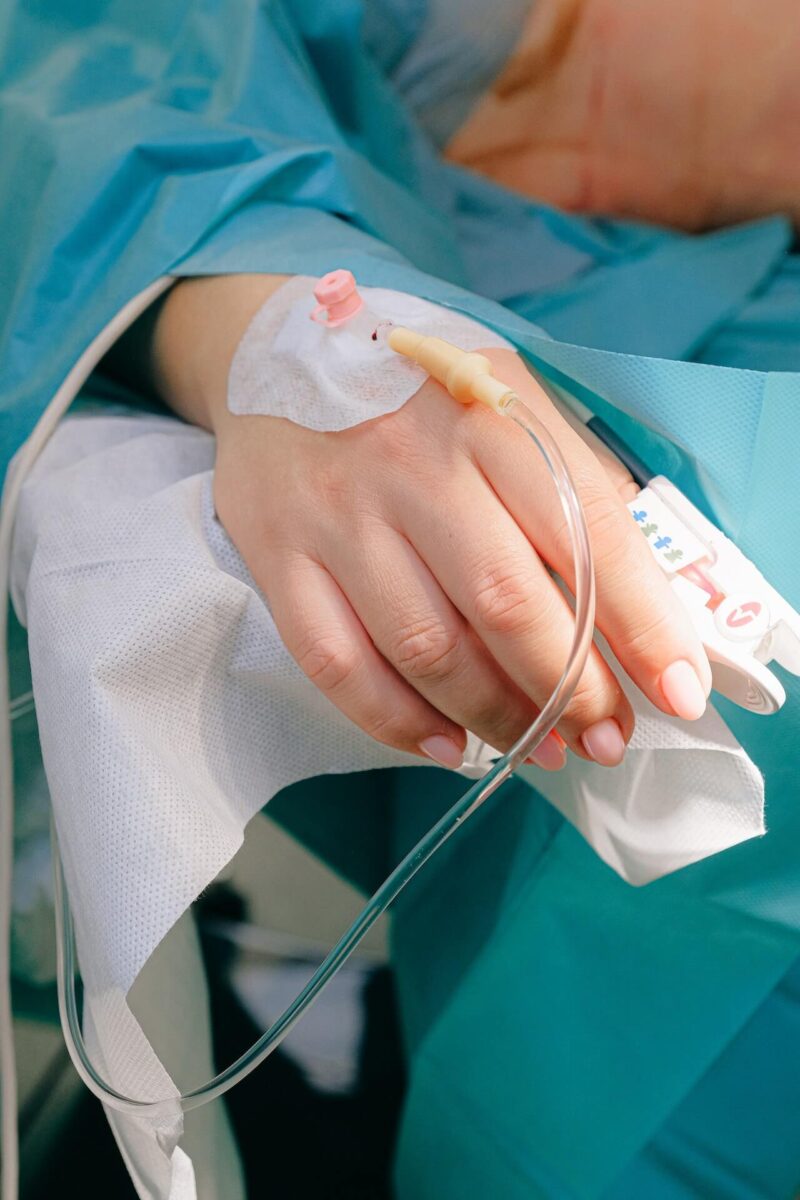Intravenous Therapy
Intravenous Therapy in Home Health Care
These days, it is no longer necessary to stay in a hospital to receive intravenous therapy. More and more often, patients are discharged from the hospital and can stay in their homes while still receiving IV treatments. This is not without complications for the patient: there is a lot of medical equipment required for intravenous treatments. Thankfully, patients do not have to manage it alone. Home health care services like UCLAHHC keep nurses on staff who are specially trained in administering and maintaining IVs, resulting in greater patient comfort and autonomy and faster recovery times.
IVs are prescribed for a variety of ailments: they give chemotherapy and antinausea medication to those with cancer, provide antibiotics to treat stubborn infections, deliver nutrition and hydration straight to the bloodstream, administer powerful pain medication, and much more.
Intravenous treatments involve a lot of bulky equipment that might restrict patient independence, so medical staff always carefully consider whether a patient will truly benefit from it. Sometimes, though, an IV is the best way to go. Some drugs are destroyed by the process of digestion, so they do not work if swallowed. Other drugs work best if administered slowly over some time, rather than in a single pill or shot. And there is also the possibility of providing hydration therapy. Regardless of the patient’s needs, UCLAHHC staff work tirelessly to minimize any stress and comfort caused by the therapy.
Intravenous Antibiotics at Home
Sometimes, antibiotics delivered orally or through an IM injection will not work well. For those times, physicians prescribe powerful antibiotics that are delivered straight to the veins.
- To prepare for and recover from surgery: even the quickest surgery in the cleanest operating room comes with the risk of infection. Oral and intravenous antibiotics are used together before, during, and after surgery to prevent infection. Gastrointestinal surgery especially requires lots of antibiotic prophylaxis. Gastrointestinal surgery especially requires lots of antibiotic prophylaxis. After being discharged from the hospital, the patient may be allowed to finish her course of intravenous antibiotics at home, completing her recovery in comfort.
- To treat certain diseases and infections: infections in the lungs, bones, brain, and some other organs are often not responsive to oral antibiotics. Infused antibiotics can help those suffering from such troublesome infections. Moreover, certain specific diseases, such as Lyme disease and meningitis, can be effectively treated this way.
IV Hydration Therapy
Certain conditions can make it difficult for a patient to drink enough water to stay hydrated. For those people, doctors may prescribe IV hydration therapy, allowing fluids to be delivered directly to the bloodstream. Hydration is a temporary measure that sustains the patient while she undergoes treatment for the condition that makes it difficult for her to consume enough fluid.
Here are a few of the conditions for which hydration might help:
- Extreme vomiting and diarrhea, which can happen due to chemotherapy treatment, gastrointestinal problems, or extreme morning sickness in expectant mothers, can severely dehydrate a patient and make it impossible to keep swallowed liquid down.
- Dysphagia, difficulty swallowing due to neurological disorders or mechanical problems with the muscles that control swallowing, can make taking fluid orally painful or hazardous.
- Severe hypercalcemia, a high calcium level in the blood, can cause heart problems and nervous system damage. Hydration, provided quickly enough, can prevent a crisis.
- Electrolyte imbalances can afflict patients with cramps and inhibit their medical faculties. Carefully introducing electrolytes can reduce these unpleasant symptoms.
- Migraines can be greatly alleviated by providing fluids mixed with a cocktail of vitamins and supplements.
For patients suffering from these (and many other) debilitating conditions, hydration administered by a dedicated home health care team can provide much welcome relief.
Are There Downsides to IV Antibiotics and Hydration?
For all their usefulness, doctors must carefully consider the needs of each patient before prescribing any intravenous therapy. Unfortunately, applying an IV can come with several unpleasant side effects.
Problems at the injection site. Intravenous needles are larger than most other kinds, so it will come as no surprise that poking someone with such a large needle causes discomfort. Infections can sometimes occur at the injection site. The patient and her family caregivers must tell the home health care team if any signs of infection appear.
Vein damage. If the IV is improperly installed, or if the patient tries to manipulate it too forcefully, infiltration can occur, where saline and medication leak from the bloodstream and enters the surrounding tissue. A similar problem is phlebitis, vein inflammation.
Risk of C. difficile. IV antibiotics are great at treating infections, but they also destroy the good bacteria that contribute to our immune systems. Taking antibiotics for long increases the chance of the patient contracting Clostridioides difficile, which can be deadly.
Nutrition imbalance. Fluids can both treat and cause electrolyte imbalances. Caregivers must carefully monitor the patient’s physical and mental state for any changes that might be caused by nutrient imbalance.
Fluid overload. Giving too high a volume of fluids can cause several uncomfortable symptoms, such as high blood pressure, edema, and shortness of breath.
Frequent urination. All the liquid pumped into a person’s veins has to go somewhere, and this means more trips to the bathroom, which is an annoyance for patients with limited mobility.
No self-medication. Even at home, intravenous treatments can be set up and administered only by a certified nurse or concierge physician. The patient loses the independence and self-reliance she would have with oral medications. (An exception is pain medication, with which patients sometimes can control the dosage within certain limits.)
Despite the array of downsides to intravenous treatments, many patients have benefited greatly from their use. The side effects might be an annoyance, but with the dedicated assistance of a home health team from UCLAHHC, patients can receive treatment in the comfort of their homes. We have nurses on staff who specialize in infusion treatments, and with their assistance, any unpleasant side effects can be dealt with quickly and competently. We also teach patients and families how to manage the IV equipment, minimizing disruption to their lives. And if something comes up unexpectedly, a nurse is available on the phone to answer your questions or schedule a nurse visit for as soon as possible.
If you or someone you know might benefit from home IV therapy, contact UCLAHHC today and let us know what you need.


